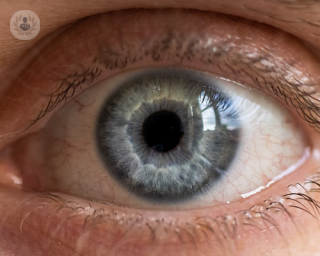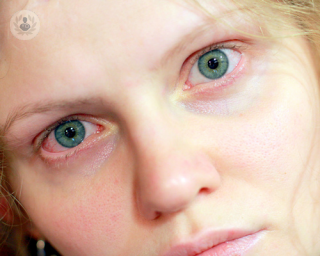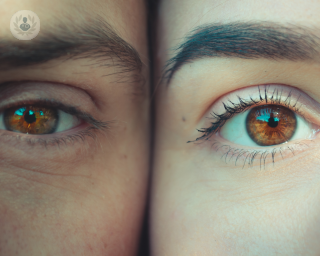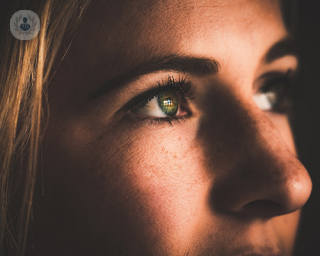Uveitis
Ms Theresa Richardson - Ophthalmology
Created on: 11-13-2012
Updated on: 09-26-2023
Edited by: Aoife Maguire
What is uveitis?
Uveitis describes inflammation of the uvea, the middle part of the eye made up of the choroid, ciliary body, and the iris. Uveitis can be either infectious or non-infectious. It is important to exclude infection before starting treatment.

What are the different types of uveitis?
There are different types of uveitis depending on the part of the uvea affected:
- Anterior uveitis (iritis): is the most common type of uveitis and occurs in the front of the eye. Anterior uveitis is typically painful and provokes sensitivity to light. Sometimes, anterior uveitis can be asymptomatic and only picked up after it has been present for some time.
- Intermediate uveitis: this refers to when the bulk of the inflammation lies behind the lens and in front of the retina. It can develop at any age and occasionally does not require any treatment other than close observation.
- Posterior uveitis (choroiditis): affects the back of the eye, mainly around the retina and choroid. It may be related to an infection or an autoimmune process. It is typically sight threatening and treatment is advised.Panuveitis: is when all compartments of the eye are affected.
- Panuveitis: is when all compartments of the eye are affected.·
What are the symptoms of uveitis?
There are several possible symptoms related to uveitis, such as:
- Eye pain- this is normally an ache which either remains in or around your eye. The pain may augument when you need to focus on something.
- Eye redness.
- Sensitivity to light.
- Blurry vision
- Floaters (small dots, squiggly lines) and flashing lights across vision.
Symptoms often develop rapidly but may also develop over several days.
What causes uveitis?
Uveitis may be caused by infection and autoimmune conditions, but may also be triggered by surgery or trauma. The following infections are typically screened for: HIV, syphilis, tuberculosis, herpes, and toxoplasmosis. These infections are rare, but treatable and early identification is extremely important. More commonly, uveitis is caused by a dysregulation in your immune system, whereby your immune cells recognise your eye as 'abnormal' and attack it.
Are certain age groups more likely to develop uveitis?
Uveitis can affect people of any age.
Can uveitis be caused by stress?
Yes, stress can increase your likelihood of developing uveitis.
How can it be prevented?
Unfortunately, uveitis cannot really be prevented. However, it is common for patients to have associated stress, illness, and tiredness with a flare up of their symptoms.
How can it be treated?
Treatment depends on the area of the eye affected. For anterior uveitis, most patients are managed with steroid eye drops. This may be either during a flare up of uveitis, or as maintenance therapy.
Patients with intermediate, posterior and panuveitis are more likely to require either systemic treatment or medication injected into the eye. After your eyes have been reviewed, the pros and cons of topical vs systemic treatment will be explained and discussed. It is difficult to generalise, but a treatment will usually be recommended that is most likely to be effective with the fewest side effects.
As a general principle, eye inflammation is managed as proactively as possible with steroid drops, injections, or tablets. A period of inactivity is then maintained with medications that are safer and easier to take than steroids. Occasionally surgery is carried out if related complications arise, such as glaucoma or cataracts.

When should I seek medical advice?
We recommend that you seek medical advice immediately if you notice an unusal change in vision or eye pain which is continual. If you contact your GP about this pain, they may refer you to an ophthalmologist (an eye specialist.)















